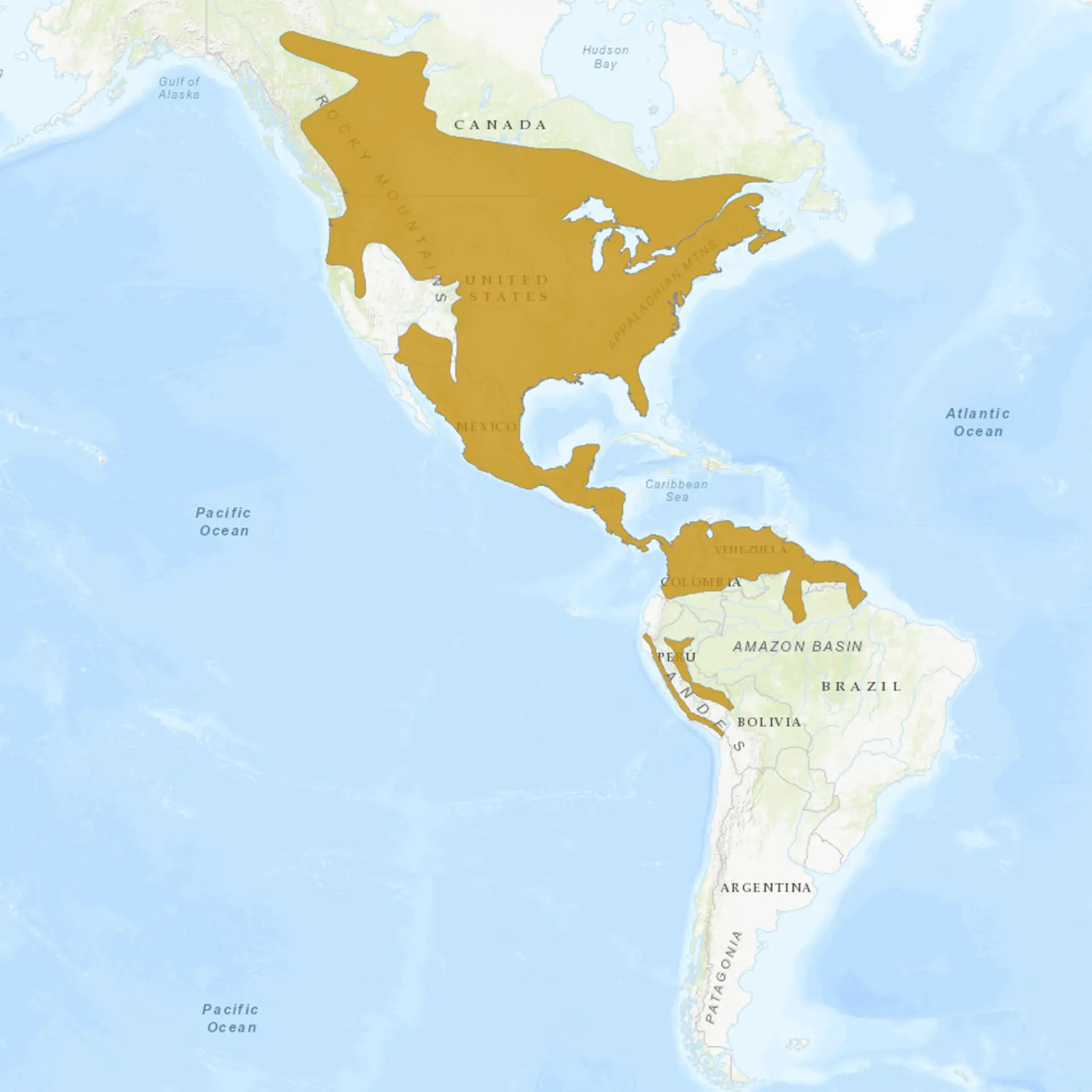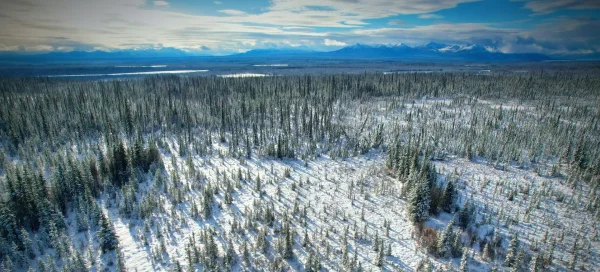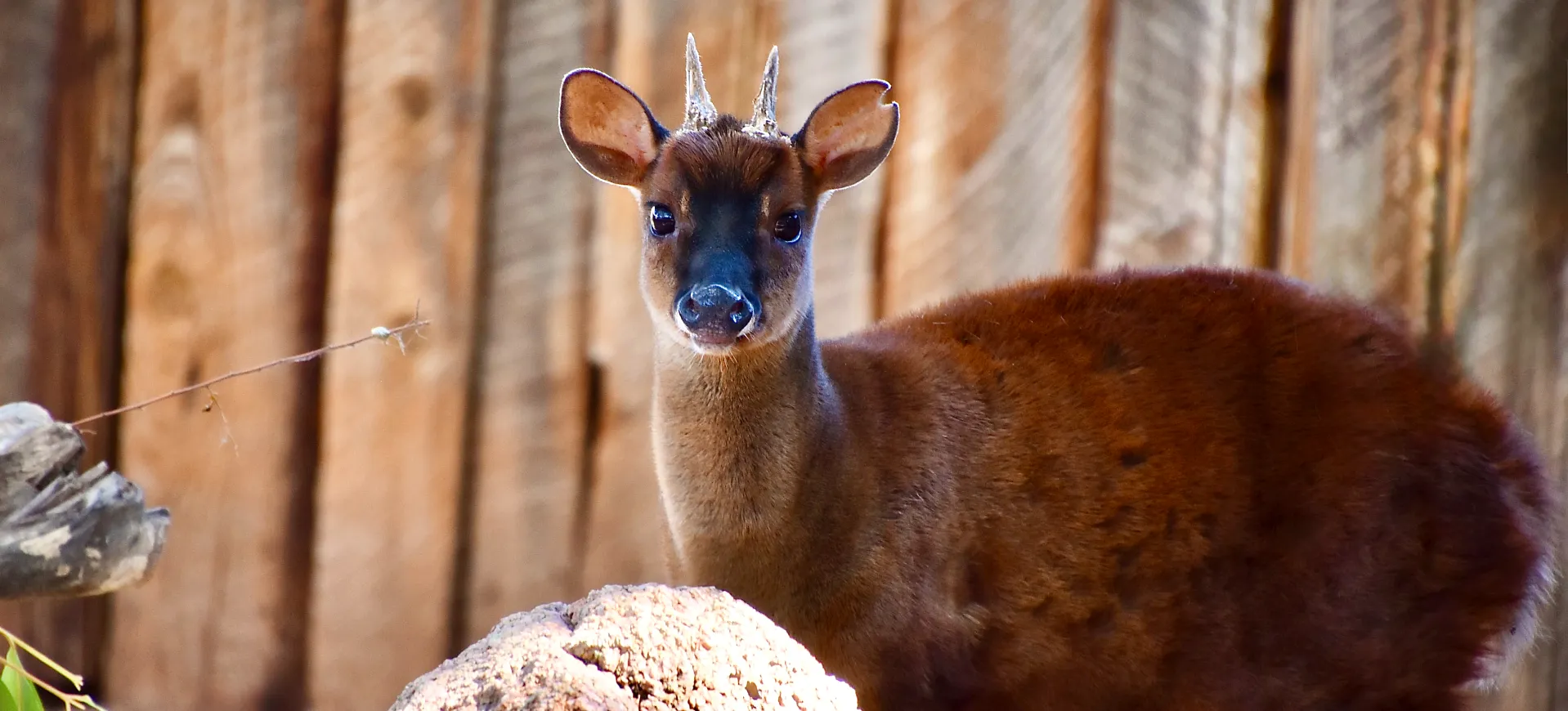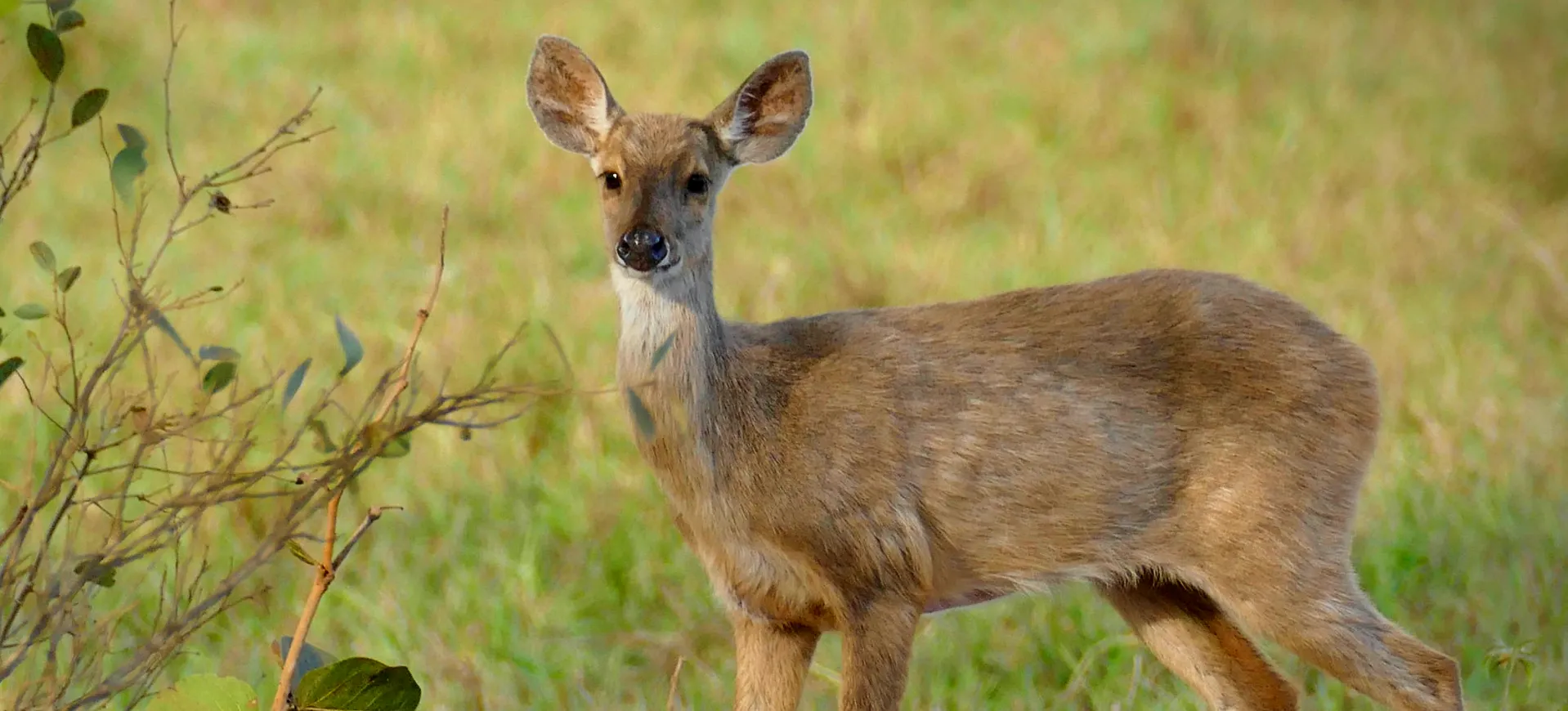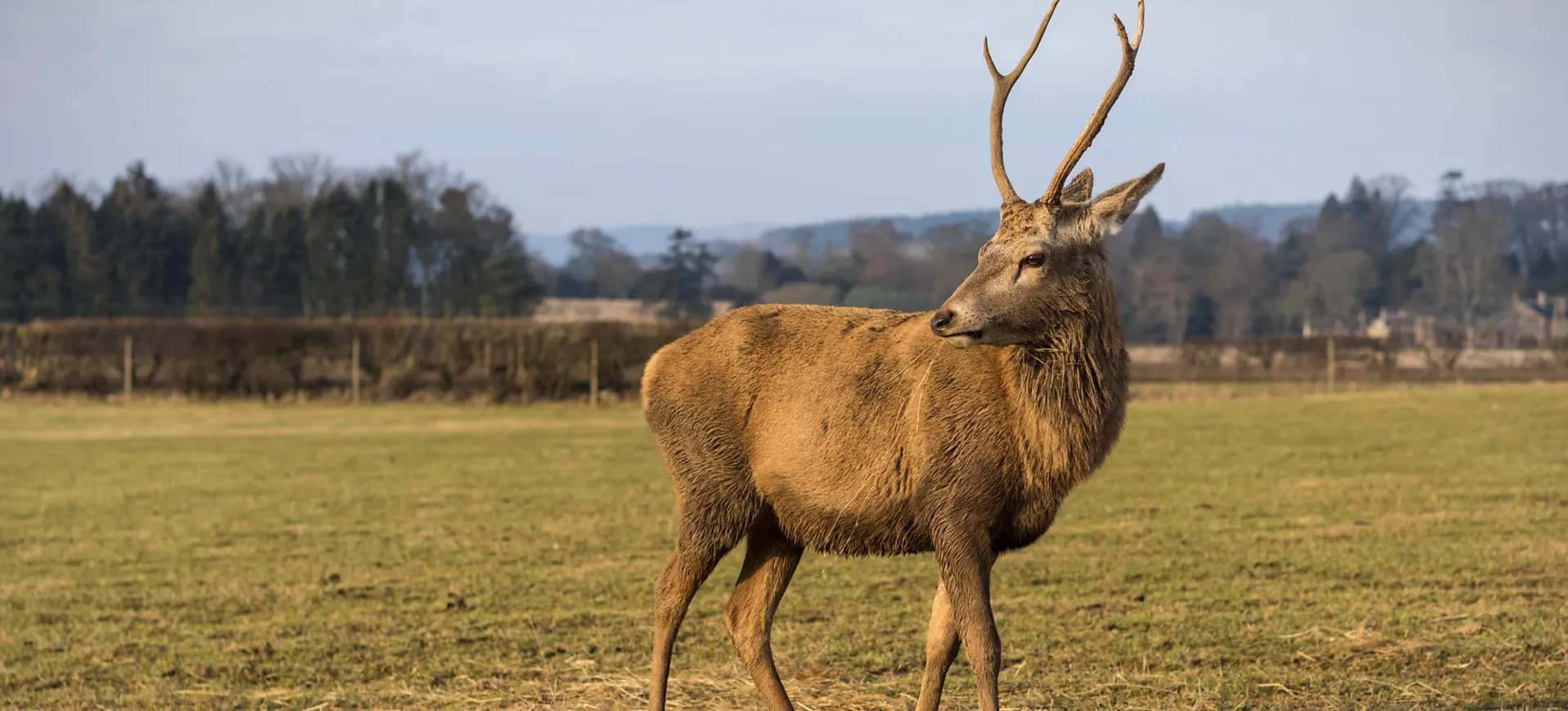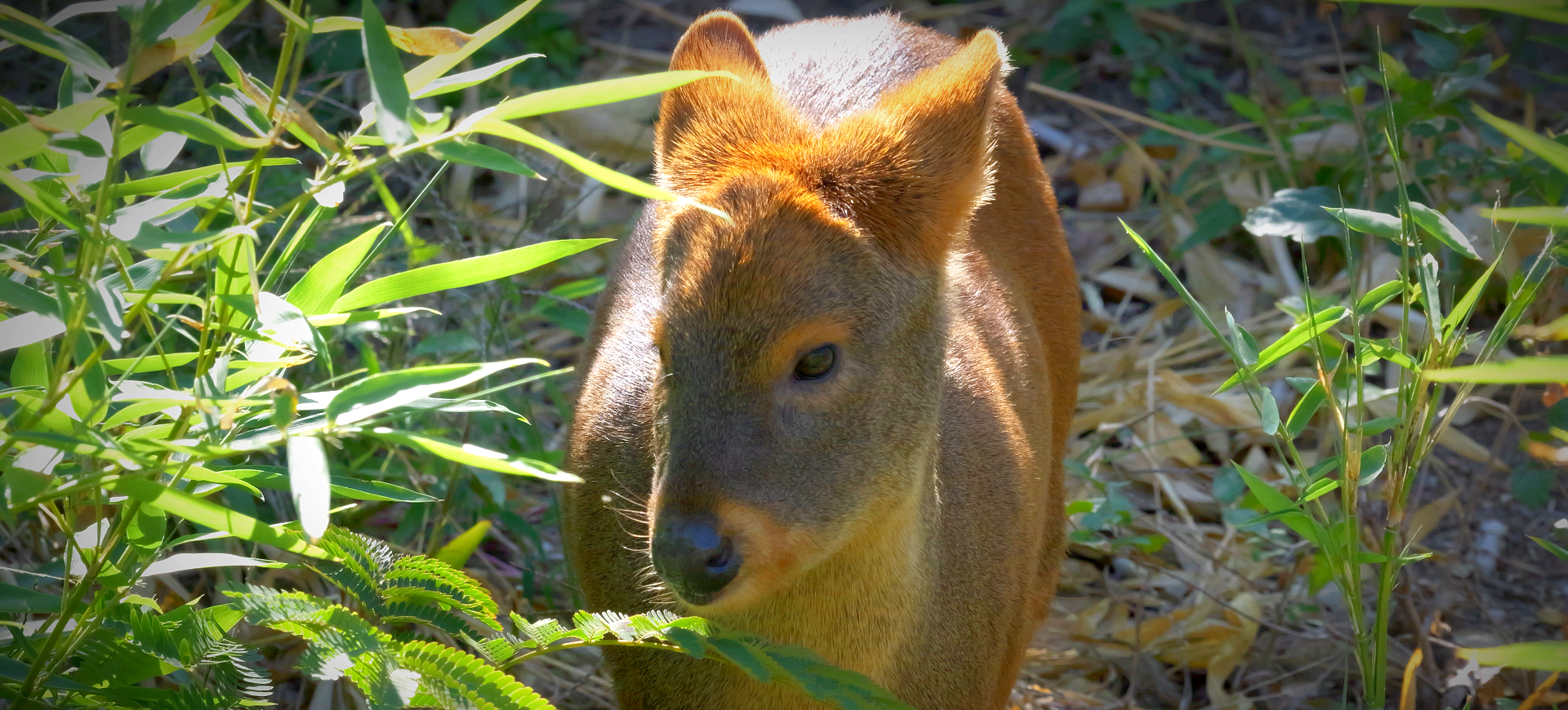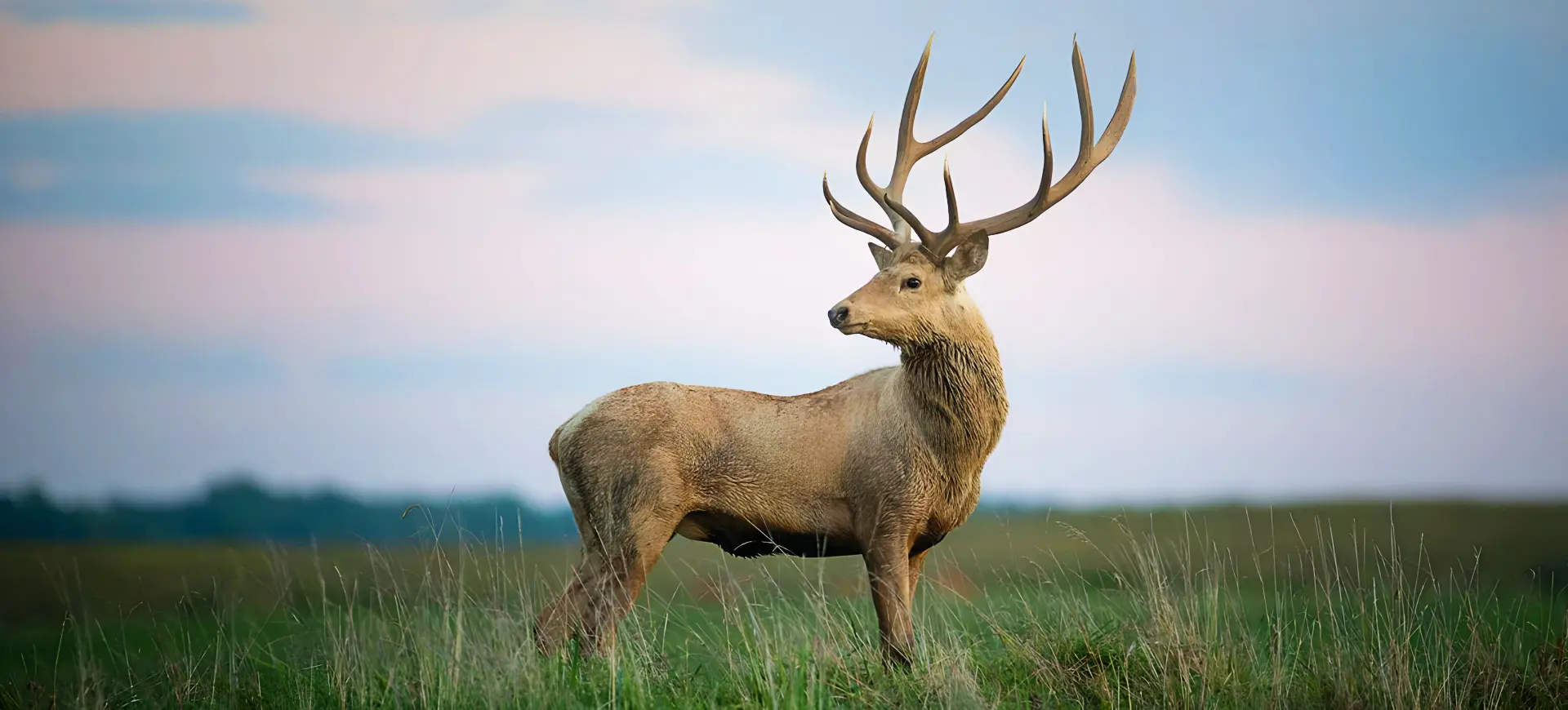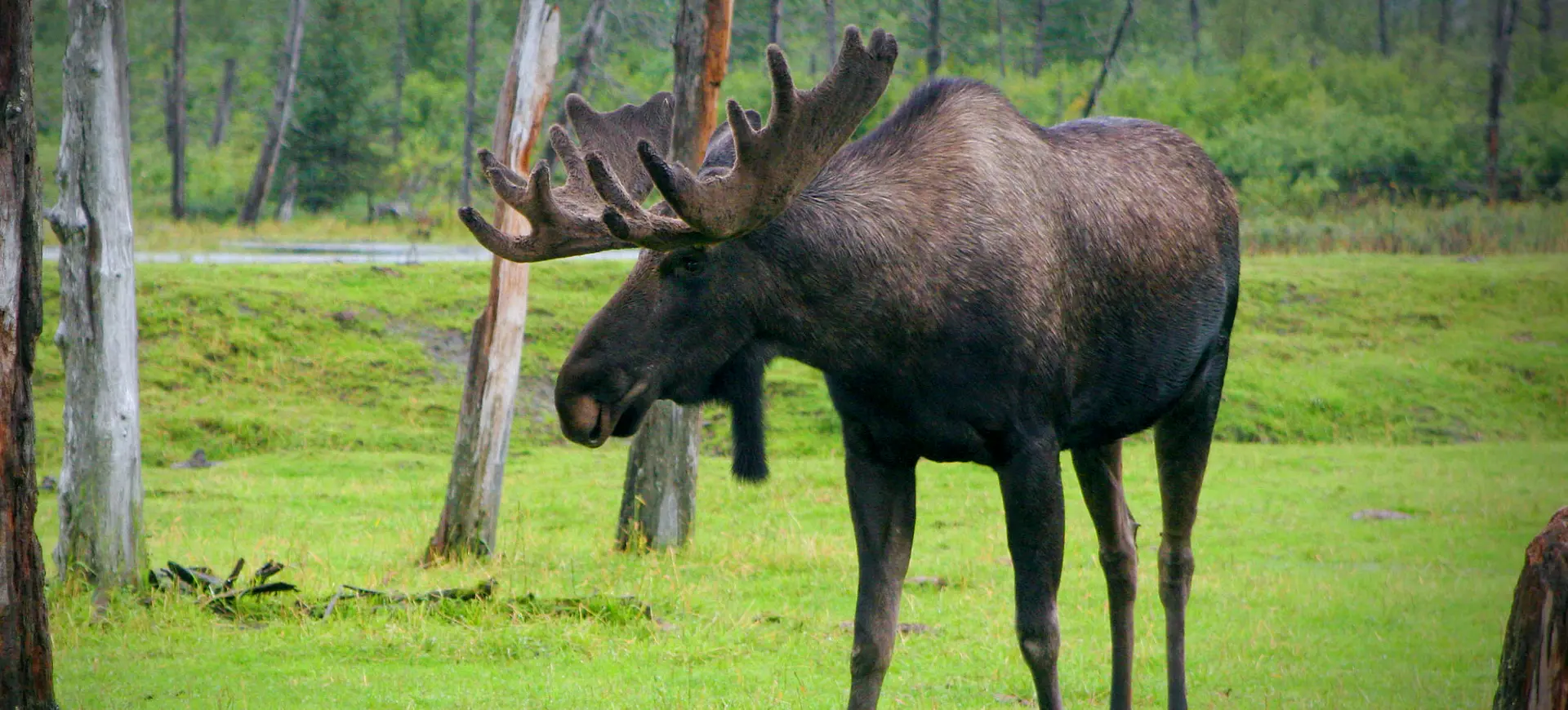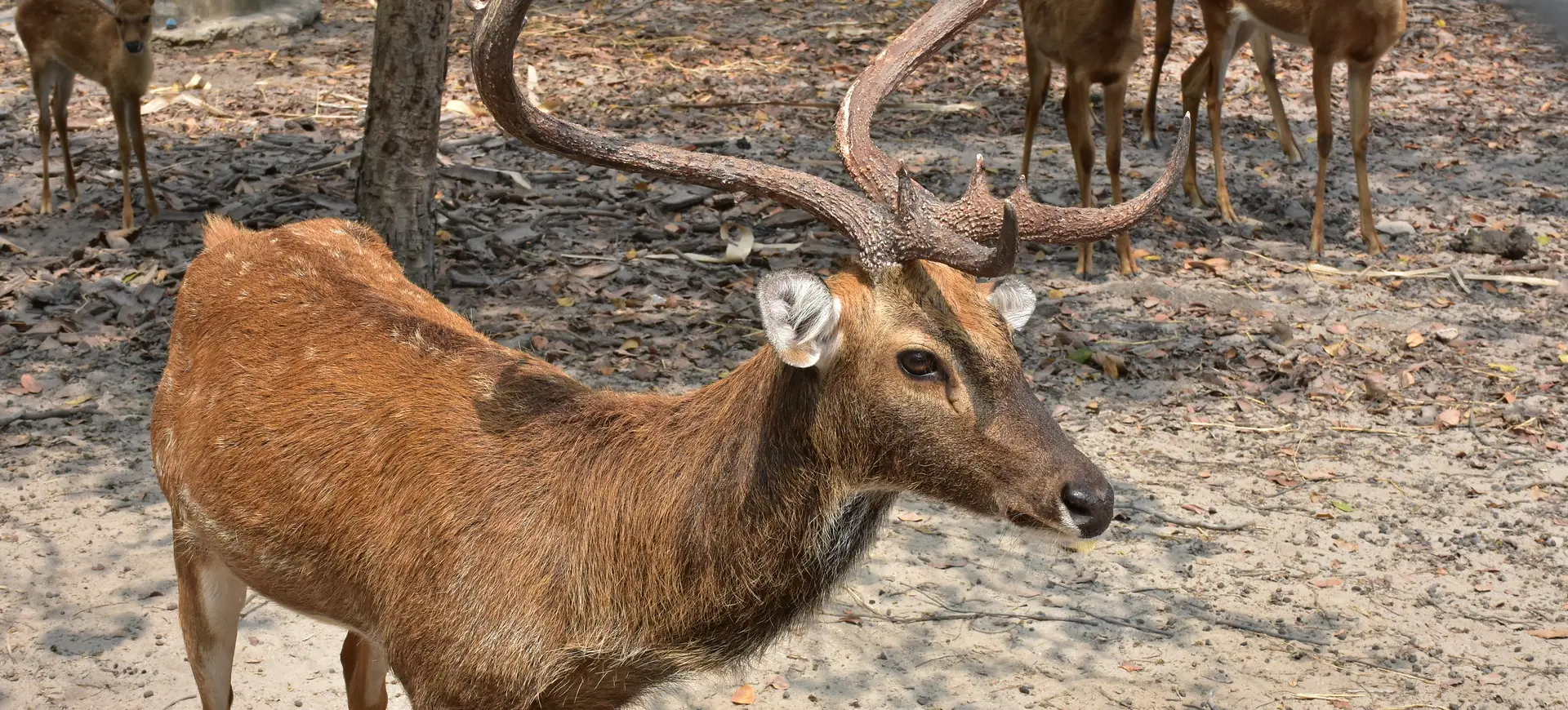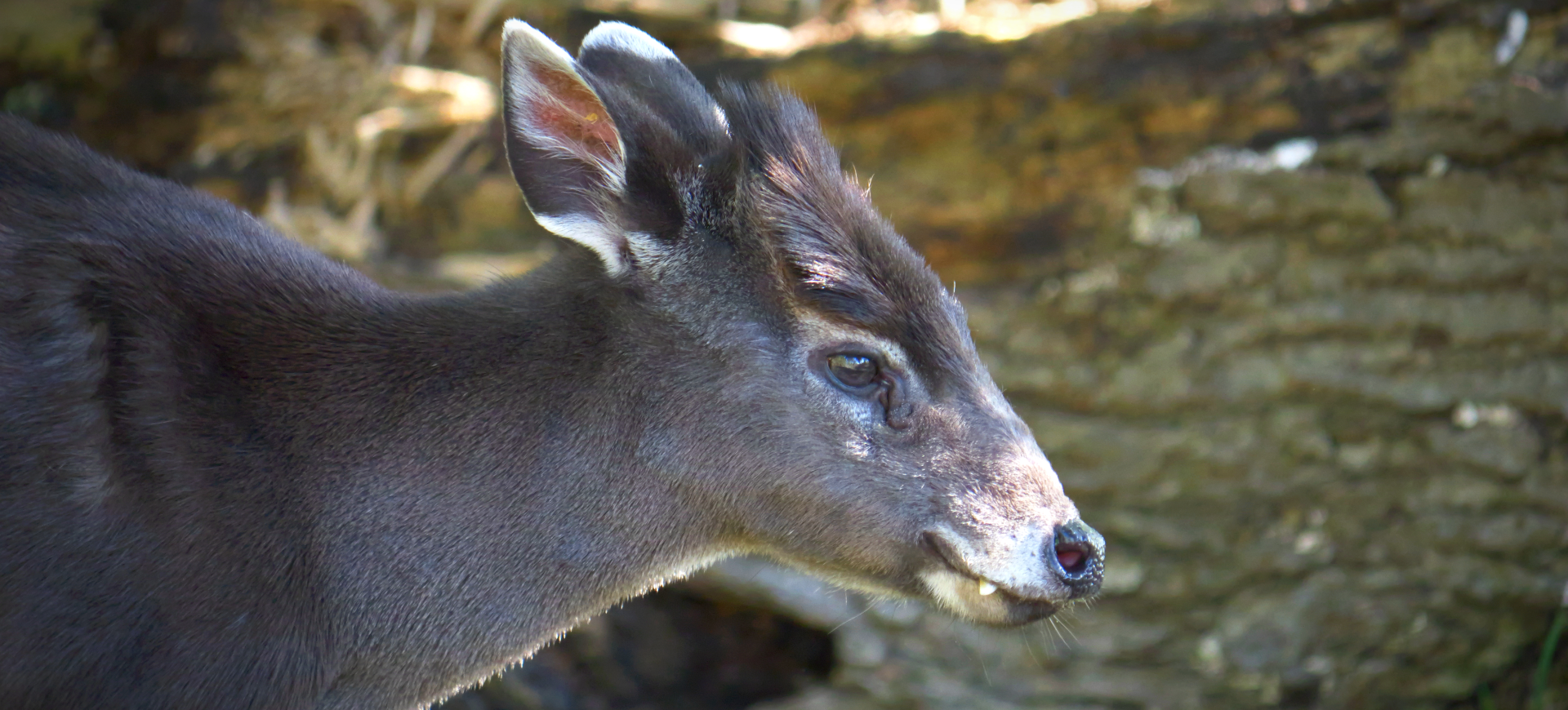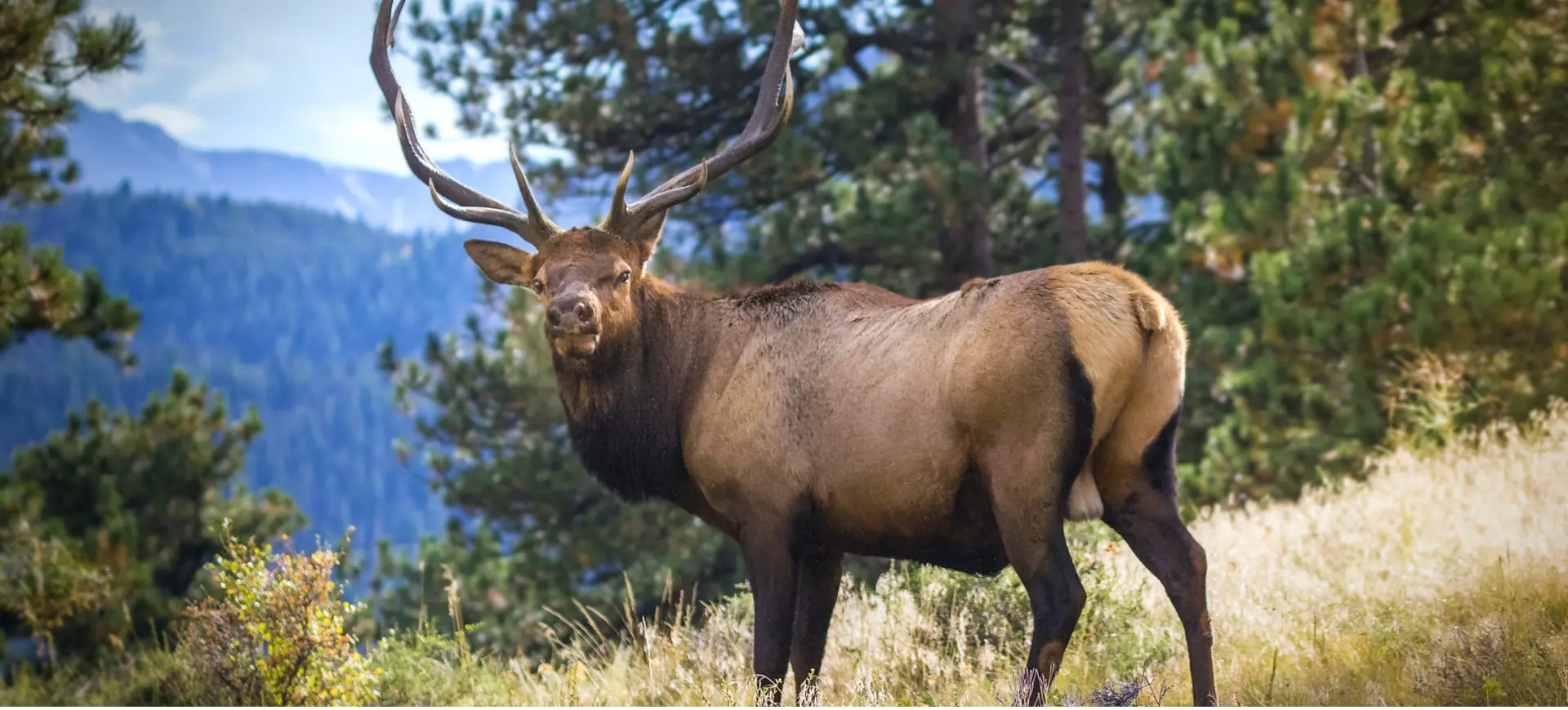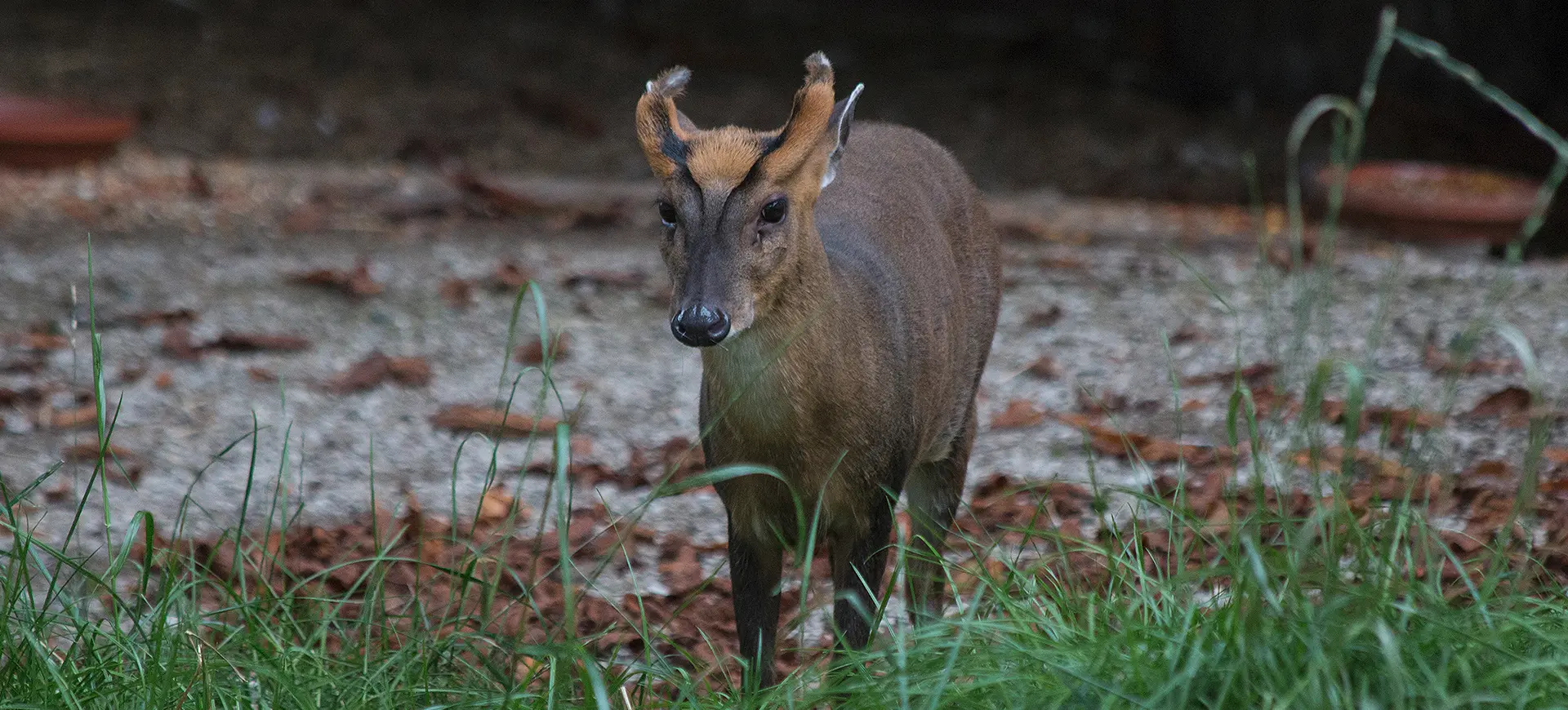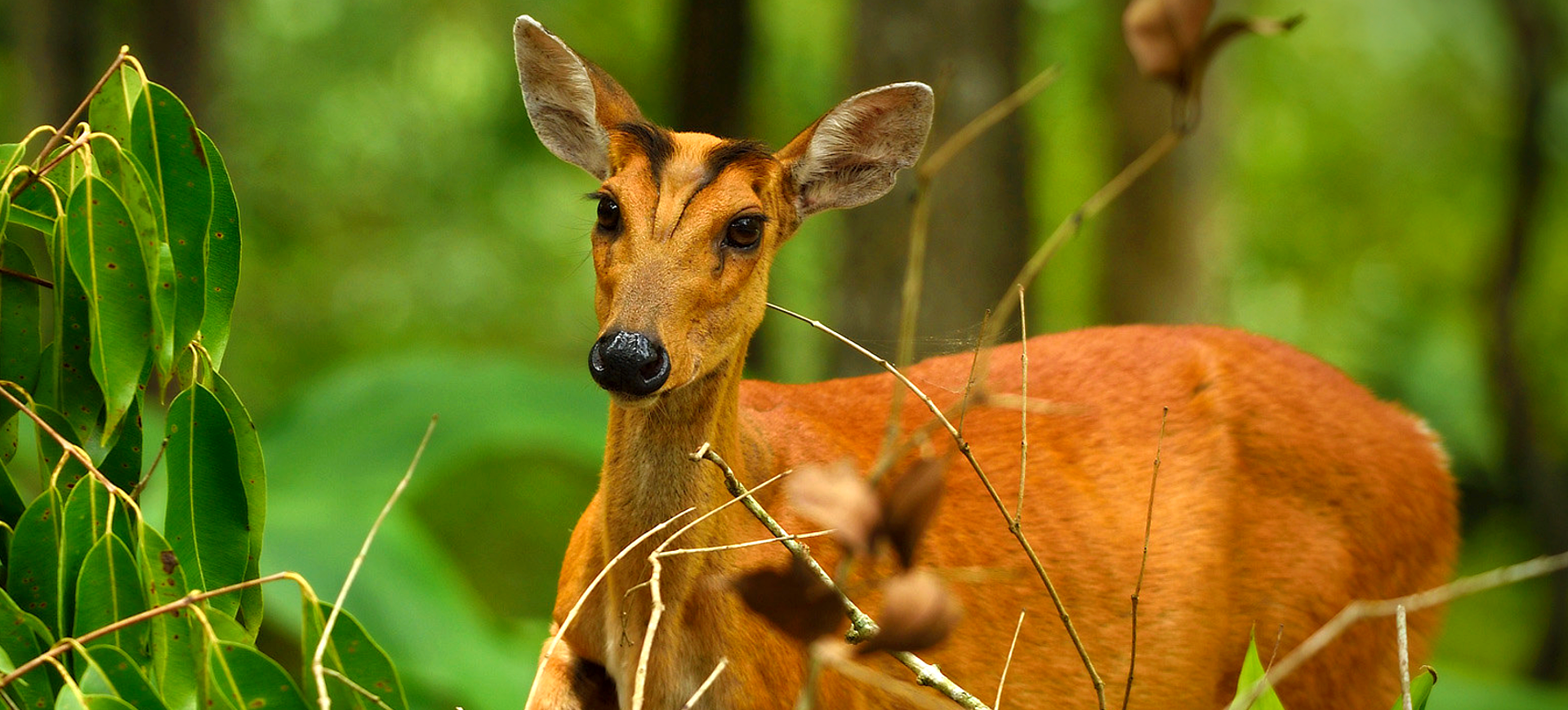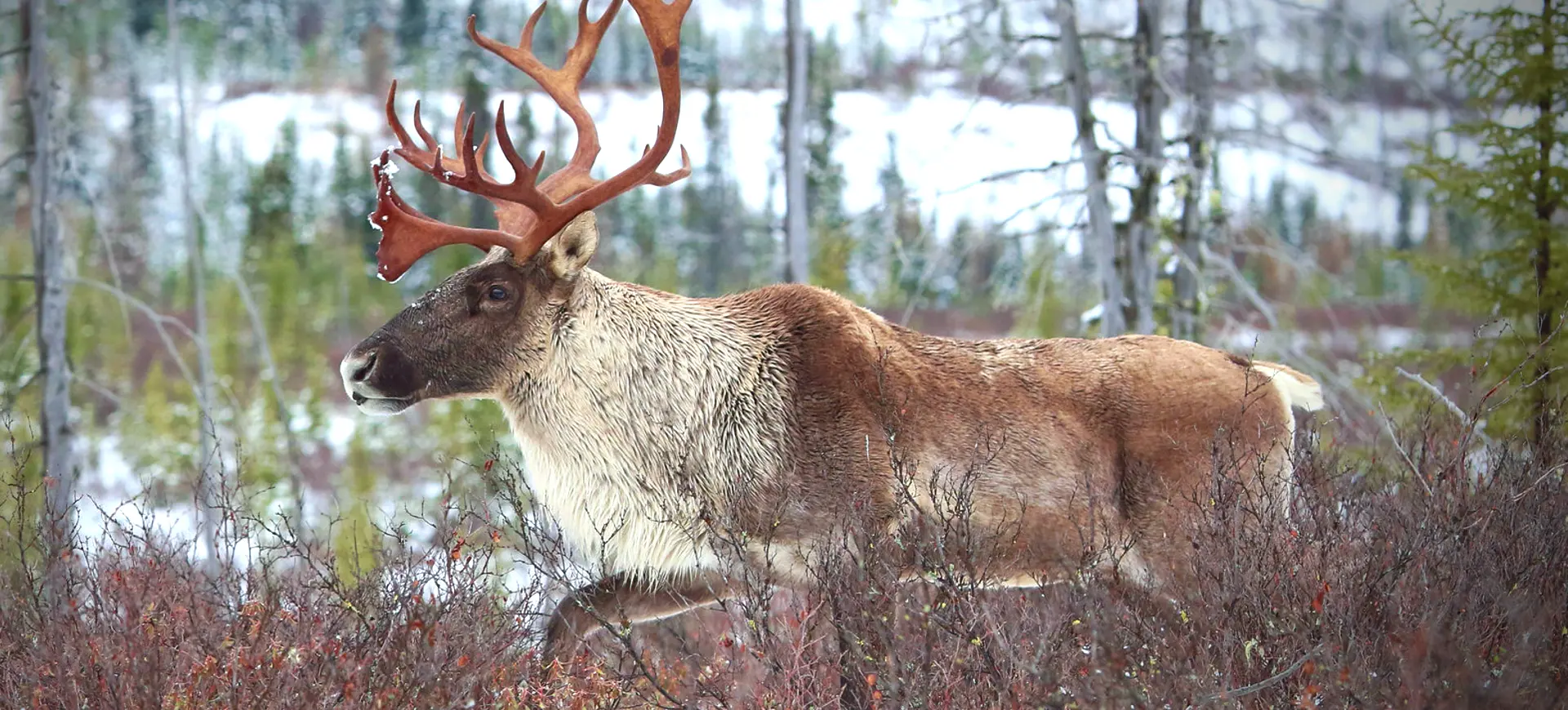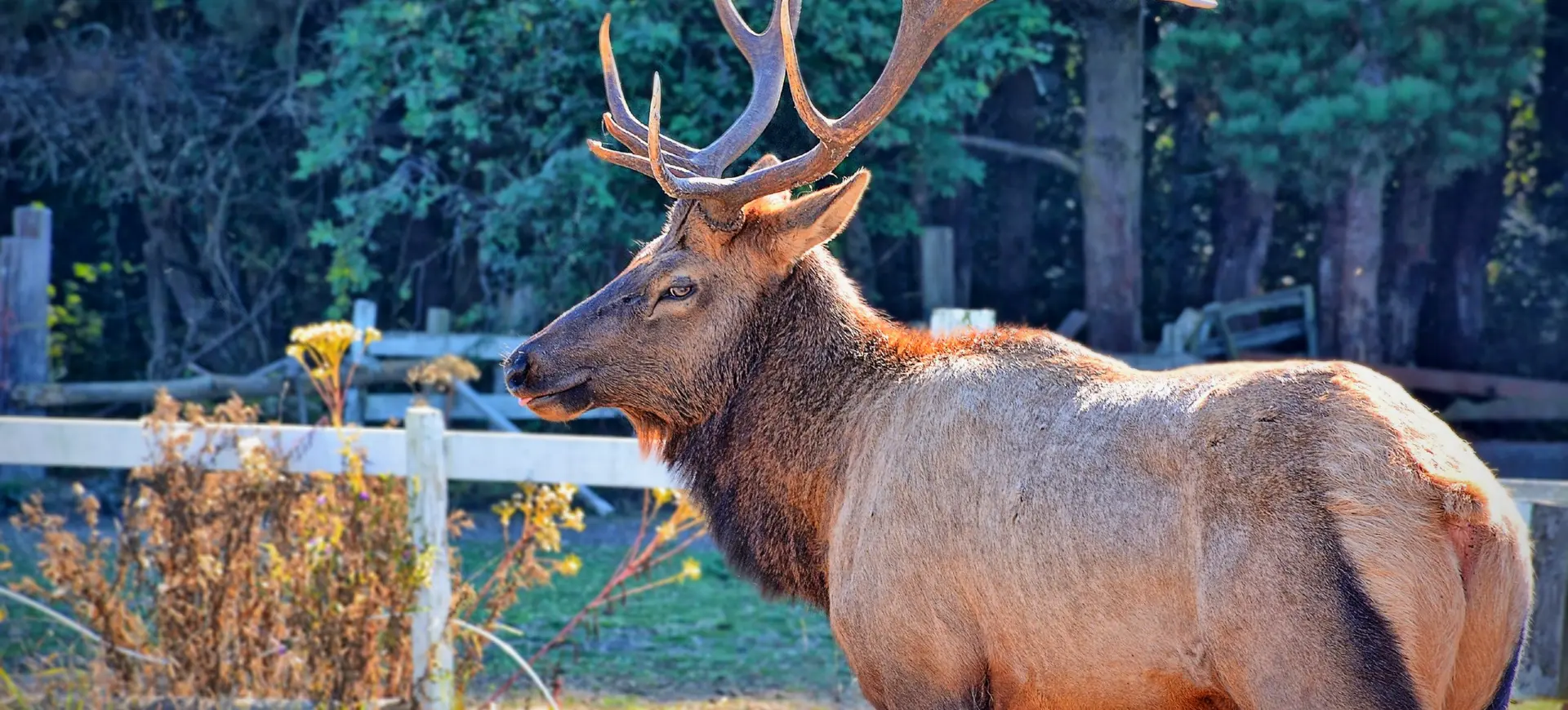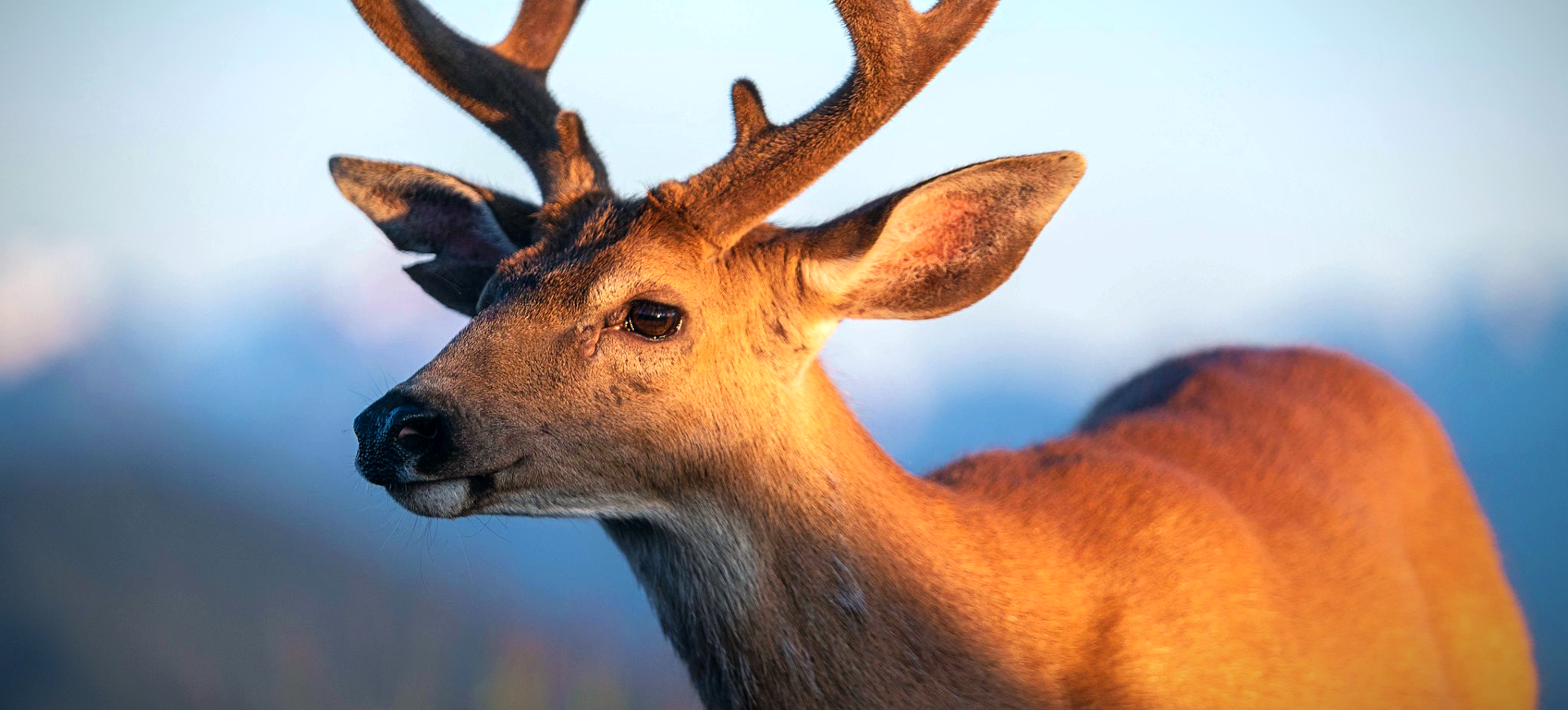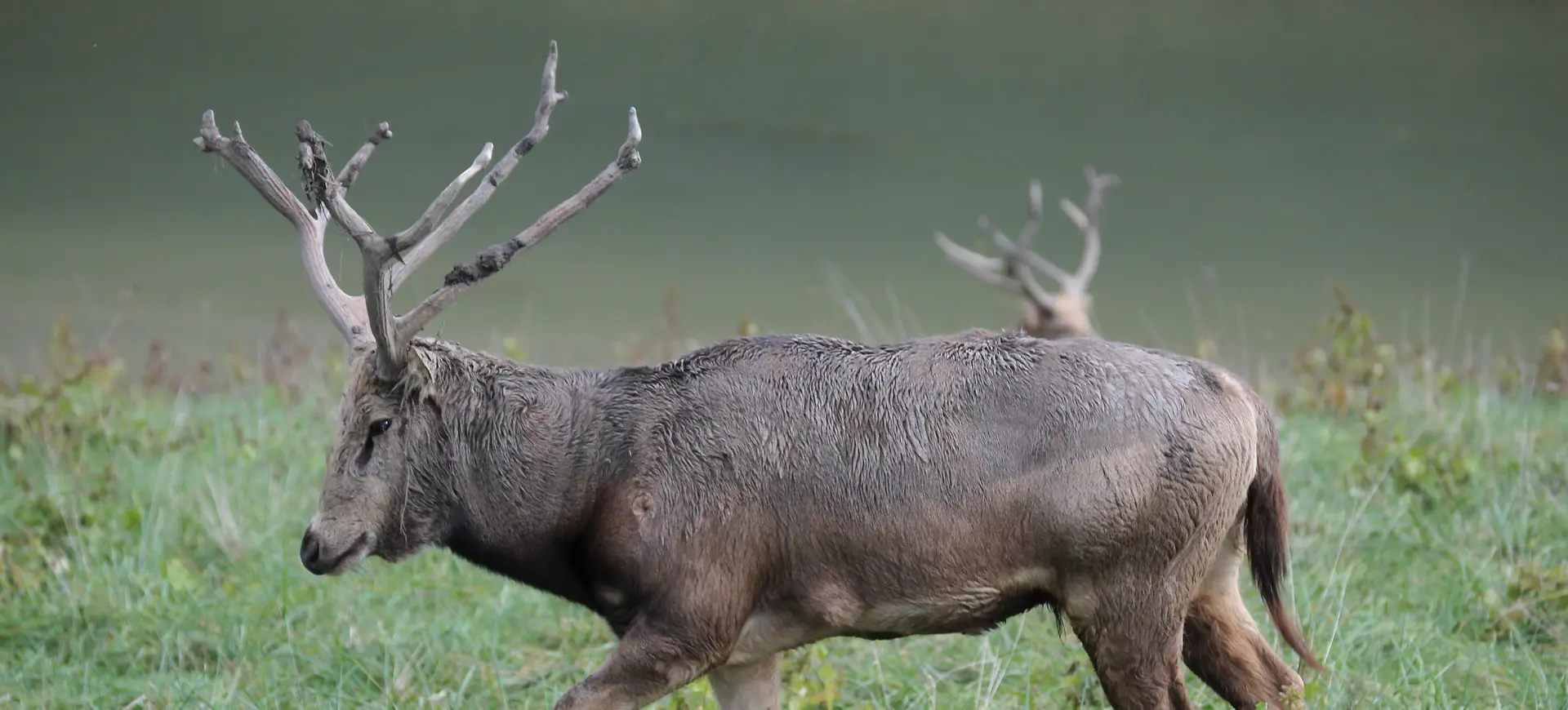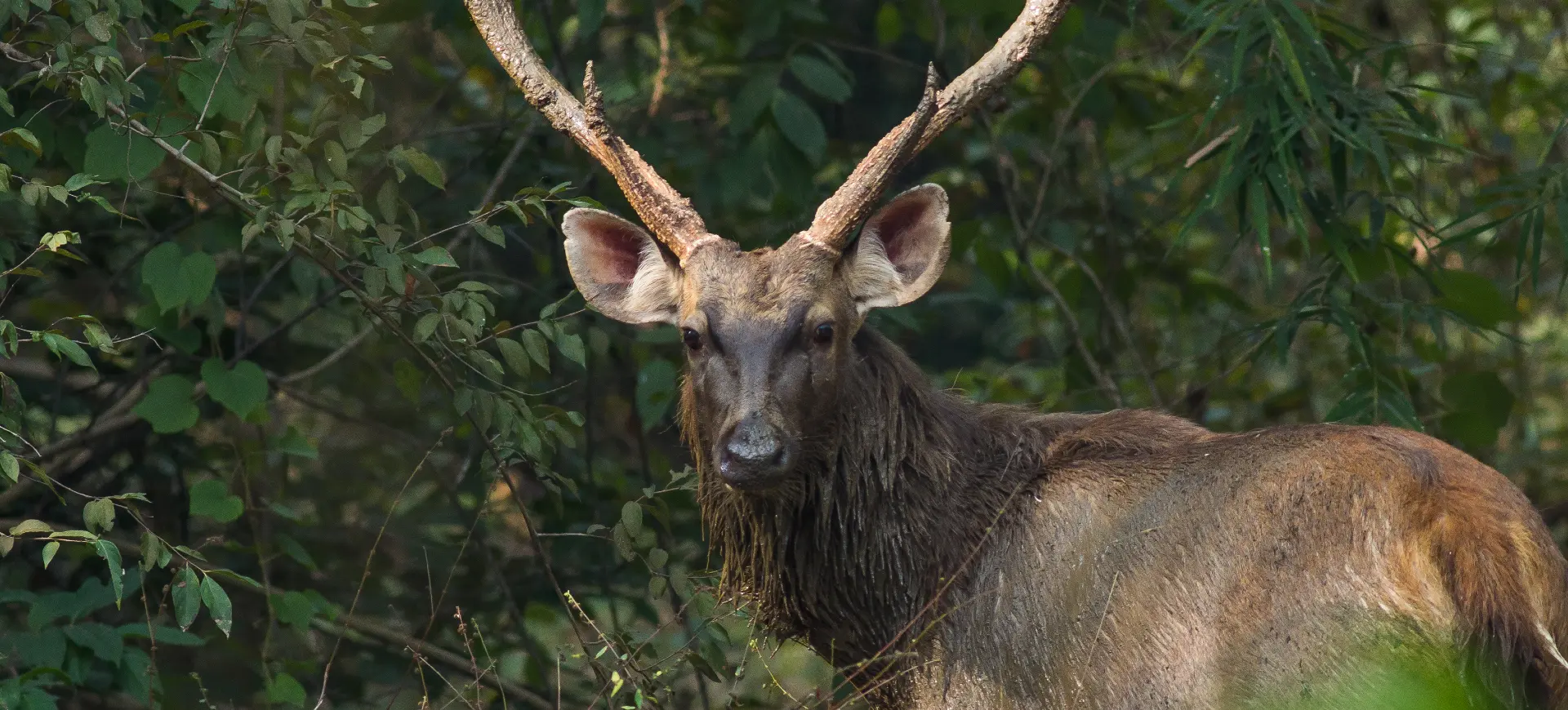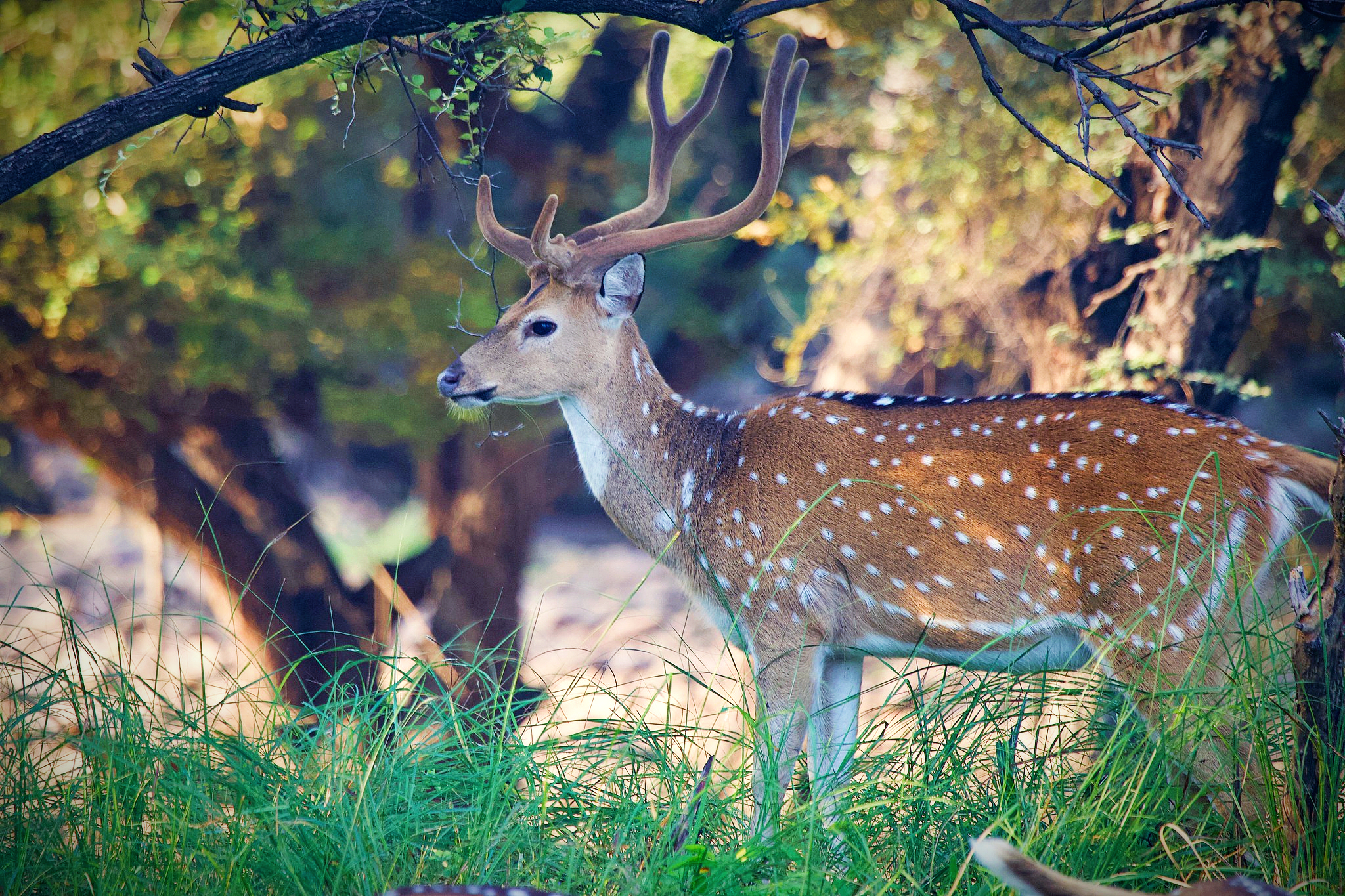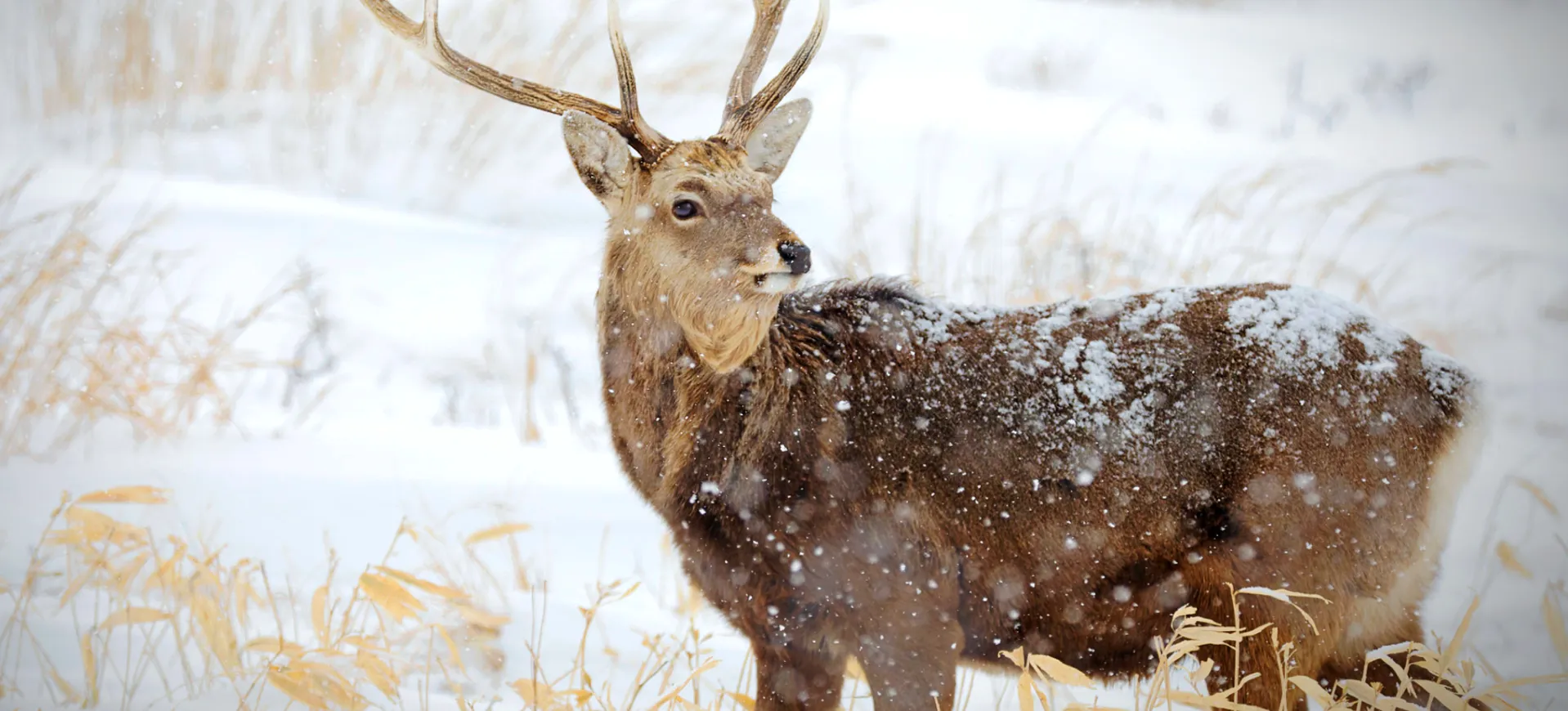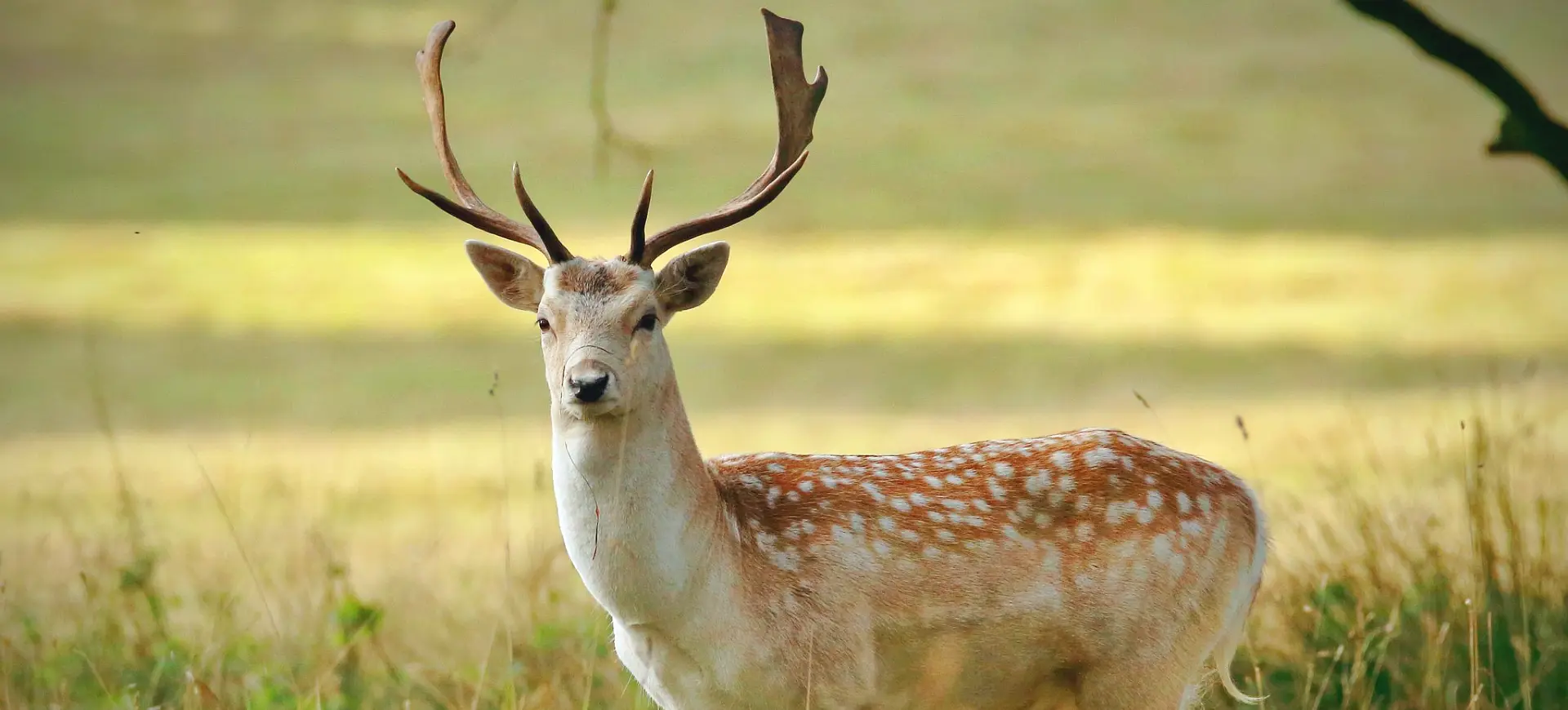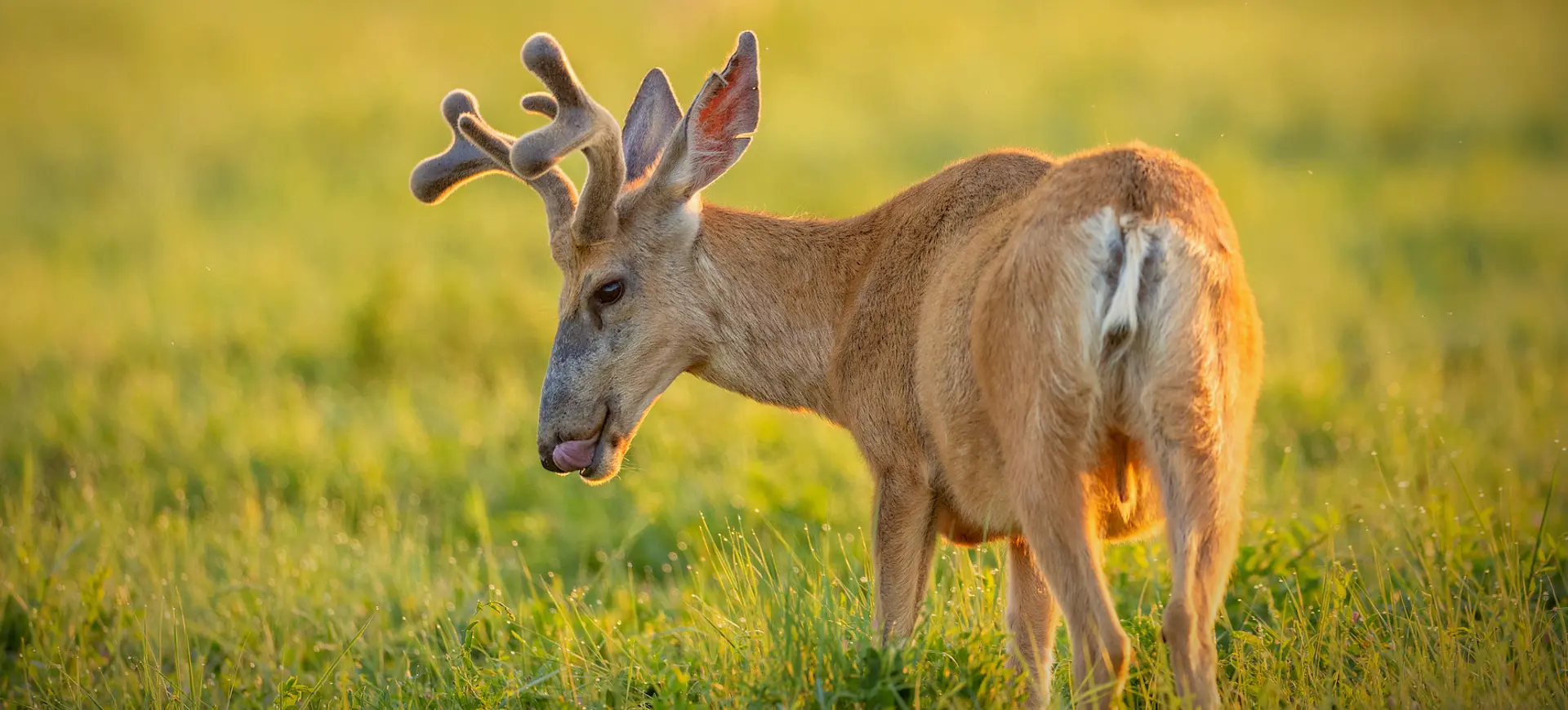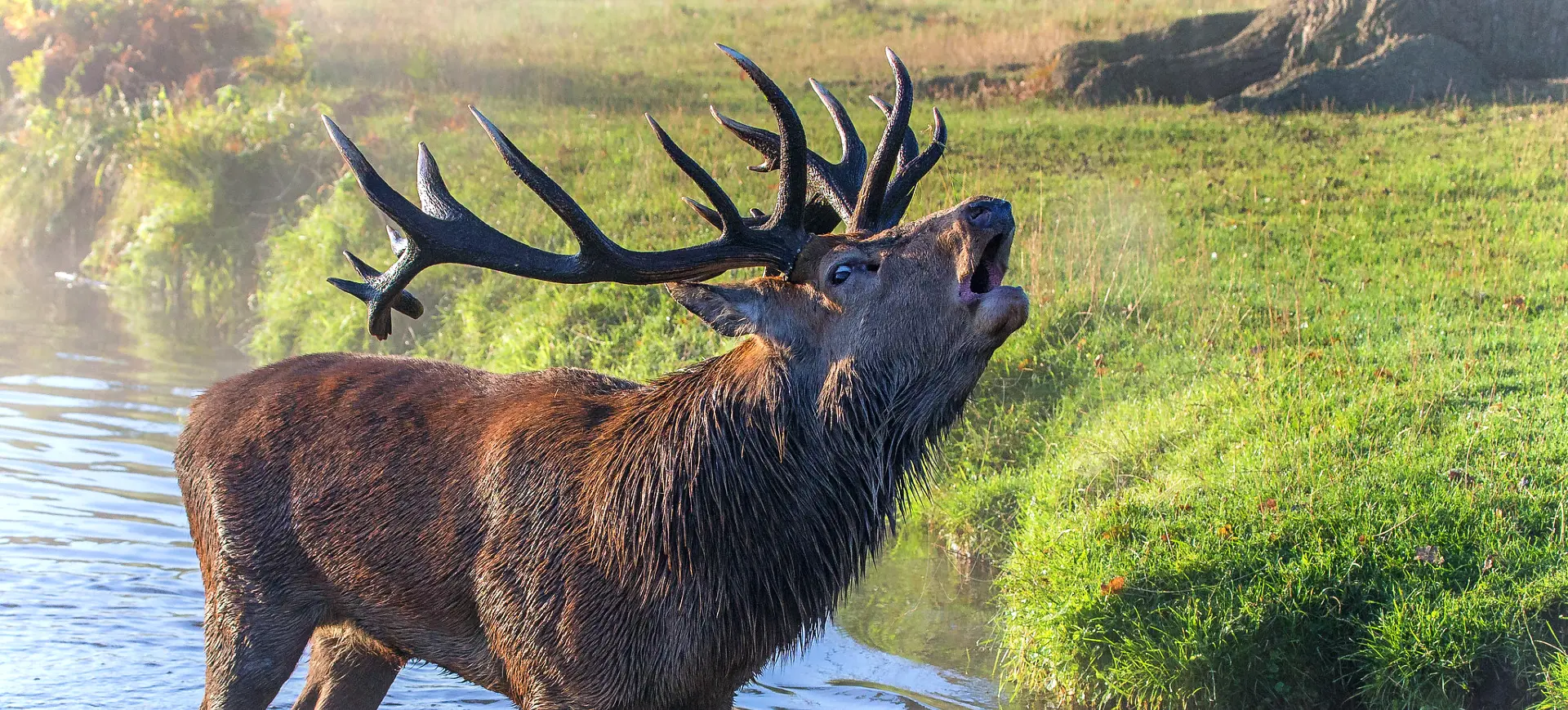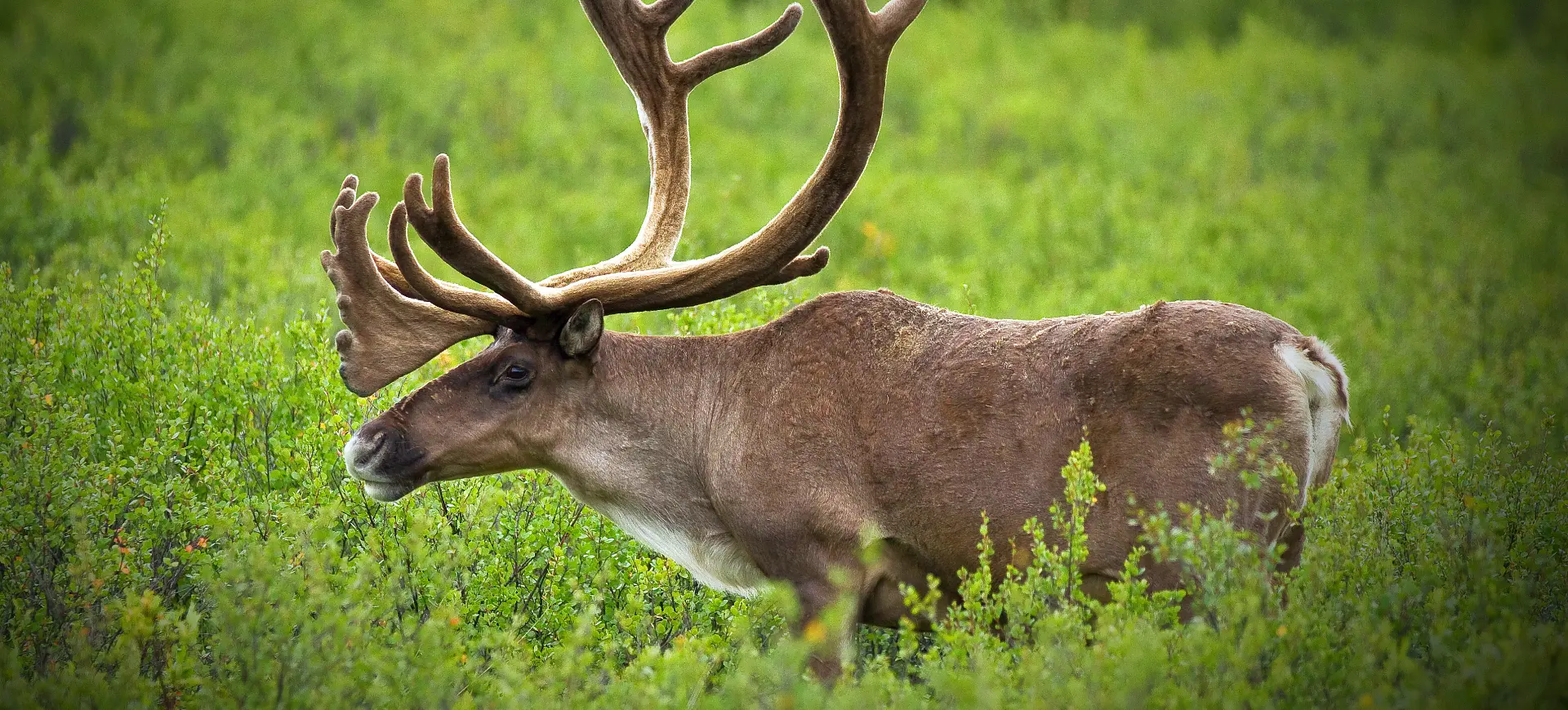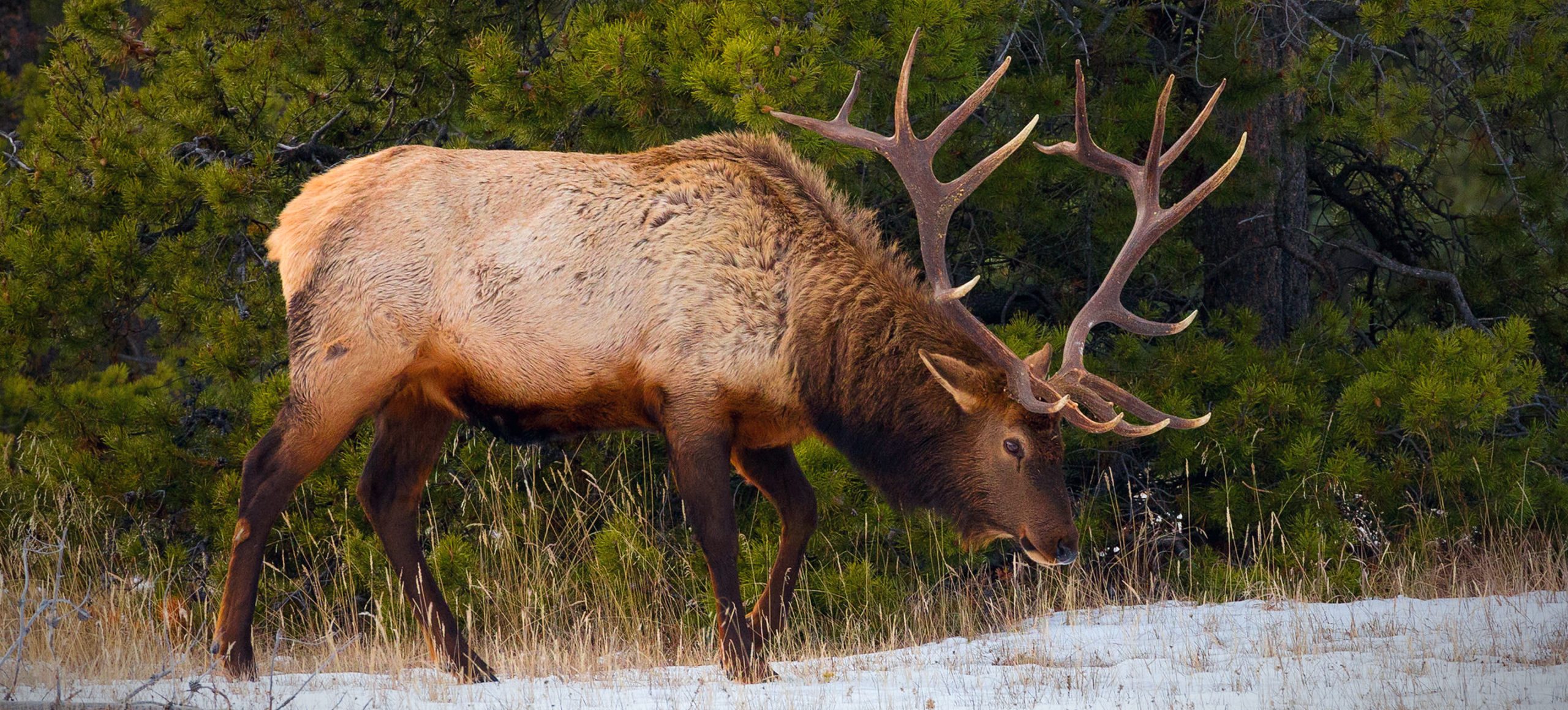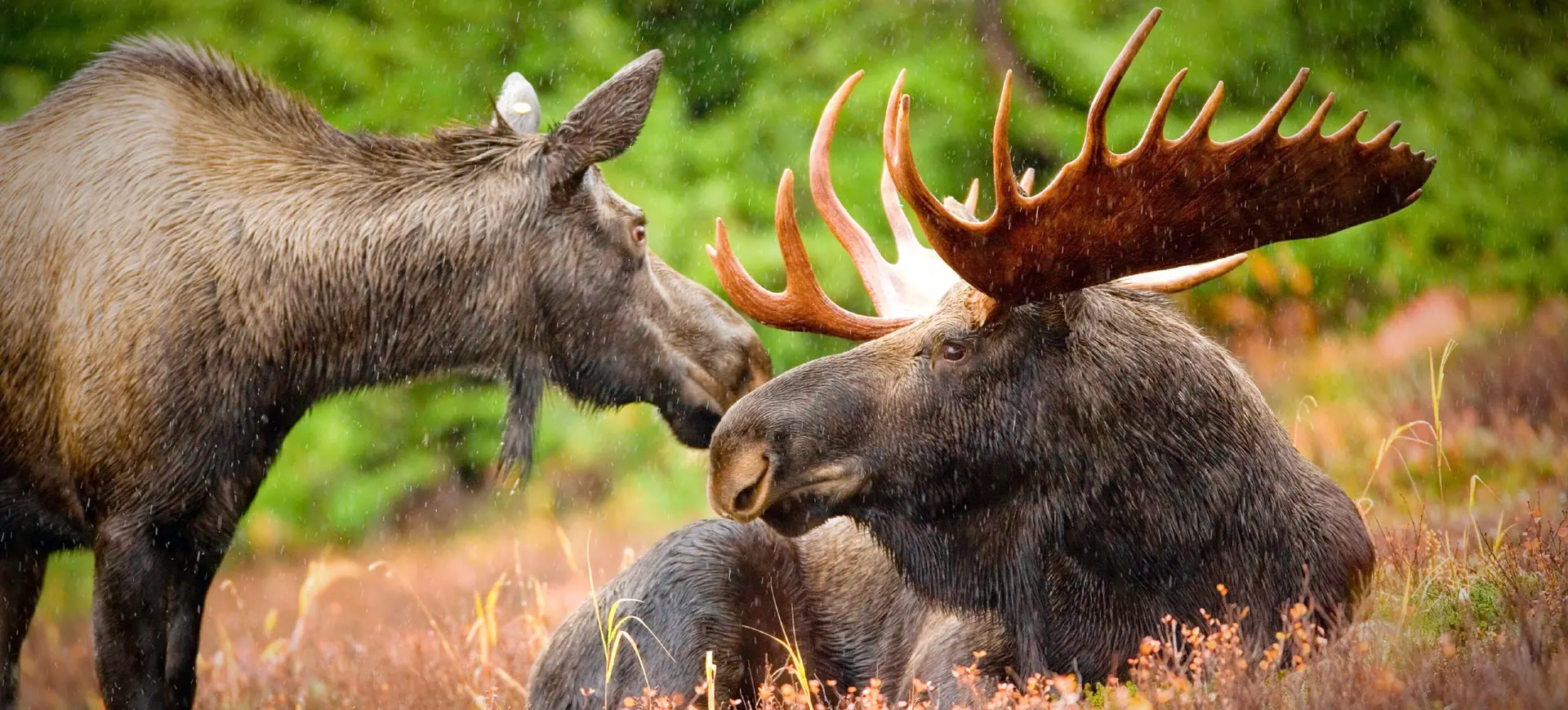Overview
The white-tailed deer, characterized by the distinct white underside of its tail, is a native mammal predominantly found in North America. It can remarkably adapt to various environments, thriving in habitats ranging from dense forests and open grasslands to suburban neighborhoods. Their adaptability is one reason for their widespread distribution across the continent, and they are often spotted grazing along roadways or near residential areas.
Known for their agility and remarkable speed, white-tailed deer are equipped with strong hind legs. These powerful limbs enable them to leap great distances, with some jumps covering up to 30 feet in a single bound. This speed and agility are essential survival skills, allowing them to quickly escape predators and navigate diverse terrains. The deer can also swim and are often observed crossing streams or bodies of water to escape threats or find new grazing areas.
White-tailed deer possess acute senses, particularly smell and hearing. Their highly developed olfactory senses allow them to detect predators from a considerable distance, giving them ample time to flee. Likewise, their keen sense of hearing can pick up subtle sounds, adding another layer to their defensive mechanisms. These heightened senses are evolutionary advantages contributing to their survival and prevalence across various ecosystems.
Taxonomy
Kingdom
Phylum
Class
Order
Family
Genus
Species
Type
Current distribution:
The white-tailed deer boasts an extensive geographic distribution that covers large portions of North America, including Canada, the United States, and Mexico. Beyond their native range, they are also found in Central America and have been introduced to regions outside their natural habitat, such as New Zealand and certain European countries. This wide distribution is facilitated by their remarkable adaptability to varying environmental conditions, allowing them to inhabit diverse ecosystems across multiple continents.
Their adaptability is further evidenced by their ability to thrive in various topographical settings. White-tailed deer can be found in mountainous regions, where they easily navigate steep, rugged terrains. At the same time, they can also live in flat plains and open fields, where they use their speed and agility to evade predators. Whether in high-altitude areas or lowland plains, their capacity to adapt to different types of landscapes contributes significantly to their expansive distribution and ecological success.
Physical Description:
White-tailed deer are medium-sized mammals distinguished by their coat color, which varies seasonally. In the summer, they sport a reddish-brown coat that transitions to a grey-brown hue during the winter. This color change helps them blend into their environment, providing some measure of camouflage against predators. The males, commonly called bucks, grow antlers that are shed and regrown annually. These antlers are often used during mating displays and territorial disputes.
Females, known as does, generally have a smaller stature than males and do not possess antlers. This absence of antlers is a defining characteristic of does, allowing for easy differentiation between genders in the wild. Young deer, or fawns, are born with distinct white spots on their coat. These spots serve a purpose as they offer an additional layer of camouflage when the fawns are lying in foliage. As the fawns mature and become more capable of evading predators, these spots gradually fade.

Lifespan: Wild: ~5 Years || Captivity: ~20 Years

Weight: Male: 150-300 lbs (68-136 kg) || Female: 88-198 lbs (40-90 kg)

Length: Male: 71-83 in (180-211 cm) || Female: 63-79 in (160-200 cm)

Height: Male: 36-42 in (91-106 cm) || Female: 24-36 in (61-91 cm)

Top Speed: 30 mph (48 km/h)
Characteristic:
Native Habitat:
The native habitat of the white-tailed deer is incredibly diverse, covering a wide geographical range that extends from the forests of Canada and the United States down to areas as far south as Peru. They are also found in various forest ecosystems, including deciduous and mixed forests. Their adaptability to different kinds of vegetation and availability of water sources allow them to thrive in these diverse settings. The deer are not confined to forested regions; they can also inhabit grasslands, which offer different resources but are equally suitable for their survival needs.
In recent years, white-tailed deer have increasingly been observed in suburban and urban settings. This expansion into human-dominated landscapes is a testament to their adaptability and a cause for concern regarding human-wildlife conflict. In these environments, they often graze on ornamental plants and can pose traffic hazards, but their presence also allows for unique opportunities for people to observe wildlife up close. Their ability to adapt to various terrains and climates has played a significant role in their widespread distribution, making them one of the most versatile large mammals in the Western Hemisphere.
Climate Zones:
WWF Biomes:
Biogeographical Realms:
Continents:
Diet:
Diet & Feeding Habits:
White-tailed deer are primarily herbivores, but their dietary habits can be surprisingly diverse and are heavily influenced by the season as well as the availability of local vegetation. During the warmer months of spring and summer, they predominantly consume leaves, flowers, and grass. This diet is rich in nutrients and provides the energy needed for growth and reproduction. In agricultural areas, they are known to forage on crops such as corn and soybeans, sometimes making them a nuisance to farmers.
As the seasons change, so too does the diet of the white-tailed deer. During the autumn and winter, they switch to consuming more fibrous materials like twigs, bark, and fruits. This shift is not just a matter of preference but a necessary adaptation to the scarcity of soft vegetation during these colder months. The deer’s digestive system is equipped to handle these tougher plant materials, enabling them to extract the essential nutrients required for survival. This diet adaptability is one factor contributing to their success across varied environments.
Mating Behavior:
Mating Description:
The mating season for white-tailed deer, commonly called the rut, generally occurs in the late autumn months. During this time, male deer, or bucks, engage in a range of behaviors to establish dominance and secure mating opportunities with females. Sparring matches, where males lock antlers and push against each other, are common. These bouts establish a social hierarchy among the bucks, with the dominant individuals earning the right to mate with available does. Vocalizations such as grunts and snorts were also used to communicate and establish territory during this period.
In addition to physical displays and vocalizations, bucks employ olfactory signals to mark their territory and attract females. They deposit scent from glands near their eyes, hooves, and antlers onto trees and ground, marking their territory and signaling their presence to potential mates. This scent marking serves multiple purposes; it advertises the buck’s readiness to mate and establishes a perimeter within which the buck aims to keep rival males out. The combination of these behaviors highlights the complexity of the white-tailed deer’s mating rituals and social structure.
Reproduction Season:
Birth Type:
Pregnancy Duration:
Female Name:
Male Name:
Baby Name:
Social Structure Description:
White-tailed deer social dynamics are generally matriarchal, with groups often consisting of a mother and her young fawns. These familial units can sometimes be expanded to include other related females and their offspring. Older, experienced typically assume the role of leader, guiding the group to food sources, water, and shelter. The social bonds in these groups are particularly strong among females, who often stay together for several years.
Males, or bucks, are usually more solitary, especially outside of the mating season. However, they may engage with other males in competitive behaviors to establish dominance during the rut. While older males might gather in small bachelor groups outside of the mating season, they are generally less social than their female counterparts. Solitary behavior in males allows them to cover more ground in search of food and mates, but it also exposes them to higher risks from predators and hunters.
Groups:
Conservation Status:
Population Trend:
The white-tailed deer population is generally considered stable, with estimates suggesting around 30 million individuals exist in the wild. One of the primary factors contributing to this stability is their remarkable adaptability to diverse habitats. White-tailed deer can thrive in various environments, from natural landscapes like forests and grasslands to areas significantly altered by human activity, such as suburban and agricultural lands. Their flexibility in diet and behavior allows them to capitalize on various resources, contributing to their widespread distribution and robust population numbers.
Despite this overall stability, there are regions where the population of white-tailed deer has been negatively impacted. Over-hunting is a significant concern in some areas, as it can lead to skewed sex ratios and lower population densities. Additionally, habitat loss due to urbanization and agricultural expansion poses a threat. When natural habitats are fragmented or destroyed, it can lead to increased human-wildlife conflict and make it more challenging for deer to find suitable food and shelter. Conservation measures are crucial in these situations to maintain healthy populations and mitigate adverse impacts.
Population Threats:
The primary threats to the white-tailed deer population stem from habitat destruction, predominantly due to agricultural expansion and urban development. While these deer are incredibly adaptable and can make do with various environments, losing their natural habitats can have detrimental effects. Habitat destruction limits the availability of food and shelter, increasing competition among individuals and leading to higher mortality rates. It can also force deer closer to humans, elevating the risk of conflicts that may harm either party.
Over-hunting poses another significant threat to white-tailed deer populations, as it can upset the natural balance of their social structures and reproductive cycles. Excessive hunting can lead to skewed sex ratios, with fewer males, which can have long-term implications on reproductive success. Moreover, vehicle collisions are a persistent concern in regions where white-tailed deer inhabit areas near human settlements. These incidents result in fatalities among the deer population and pose safety risks for humans. Consequently, hunting regulations and traffic warning systems are essential for mitigating these threats.
Conservation Efforts:
Various conservation strategies have been designed to safeguard the white-tailed deer population, one of the most common being regulated hunting seasons with clearly defined bag limits. These regulations are based on comprehensive population studies and are meant to control deer numbers without causing harm to the overall population. Hunting also serves as a management tool to lessen the pressure on habitats that may not be able to sustain large deer populations. In addition to hunting regulations, habitat restoration efforts, such as reforestation and natural corridors, have provided deer with suitable living environments.
Public awareness campaigns educate people about the importance of preserving the white-tailed deer and their habitats. These campaigns often include information about responsible hunting practices, the importance of not feeding wild deer, and the role of deer in the ecosystem. Other preventive measures have been instituted where human and deer populations overlap. For example, fencing has been erected around critical habitats or busy roadways to reduce the likelihood of deer-vehicle collisions. Road signs warning of deer crossings are also commonly used to alert drivers, reducing the risk of accidents involving these animals.
Additional Resources:
Fun Facts
- White-tailed deer can jump up to 30 feet in a single bound.
- They can swim at speeds up to 13 mph.
- Fawns are born with white spots, which they lose as they grow.
- White-tailed deer have been observed to eat meat on occasion.
- Their antlers can grow at a rate of 1/4 inch per day.
- A white-tailed deer’s nose has 297 million olfactory scent receptors.
- They make a variety of vocalizations, including grunts, bleats, and snorts.
- Bucks mark their territory using a scent from a gland near their eyes.
- Their eyes are on the sides of their heads, giving them a wide field of vision.
- The white underside of their tail is used as a warning signal to other deer.


